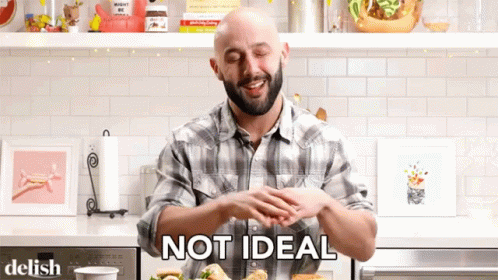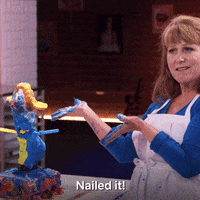Case Study
Content strategy is not that different from baking
By Samantha Zaragoza | November 9, 2022
Like any well-baked marketing strategy, content strategy starts with understanding the target market.
Having the right target market helps you determine where to concentrate your marketing efforts and what to offer that is compelling and well-received. But what happens if you are unsure of your target market?
Business Objectives:
• Lead Generation
• Lead Nurturing
Verticals:
• Sales & Marketing
![]()
I learned at a young age that baking is a science, not just about following steps and measurements. Understand the ingredients and methods and you’ll get consistently scrumptious goodies. The same goes for content strategy.
I’m a stickler for rules and detail. Growing up, I created rules for my sense of security.
I remember walking a specific route to school, rain or shine. I wrote down the steps for making my bed. I patronised one sari-sari store for years for their queuing system, even after moving houses.
Break the order and I stress out.
That’s how I fell in love with baking. It wasn’t due to my sweet tooth, but because baking produces consistent quality I can trust. Even when I had to deviate from a recipe, science tells me how the changes exactly affect the outcome.
So how did I get into the craft? It was after I had a meltdown about thirty years ago while frying tikoy. “Should I flip the tikoy?” I asked my mom. “You can. When the bottom part cooks,” she said.
“How will I know if it’s cooked?”
“Check the bottom with the spatula.”
“What? No, no, no! I need to know exactly how many minutes before I flip it! What if I burn it!”
This whiny child got a proper scolding and her first lesson in baking. I was instantly fascinated. I understood why I mustn’t pack all-purpose flour into measuring cups; or why puto (Filipino rice cake, not the Spanish slur 😅) should use baking powder and not baking soda. Even more interesting is learning about substitutes—a true test of a baker’s skills.
I was so proud of my first batch of cookies and brownies that I sold them in school.
Fast-forward to today as a content strategist (we’ll save my baker-to-writer/editor story for another time), and I realised how strategy is a lot like baking. You need a recipe, the correct measurements, and to trust the process; but you also require science to discern what to replace missing ingredients with or how to save a failing dish.
This knowledge came in handy when I had to work on a content strategy that cut the main ingredient out.
The Challenge: When there are no chocolates for choco chip cookies
Like any well-baked marketing strategy, content strategy starts with understanding the target market. However, we lacked this crucial element when we had to craft a strat for a key client.
We wanted to decipher more than the general customer type—from their online and offline behaviour to their distinct pain points. How do they interact with the client’s brand? What situations lead them to discover and eventually purchase products and services? These are some questions that build a sturdy content strategy foundation.
Because we don’t have access to the client’s audience data, we wore our thinking toques and substituted the ingredient for the next best thing—SEO analytics.
The Solution: Raisins or peanut butter instead of choco chips? Time for trial and error to find out
Using Ahrefs, we surmised target reader problems, search intent, and topic preferences using the site, keywords, and content explorer tools. Admittedly, these only offered a glimpse of who the company’s specific target audience actually is. We needed to make the best of what we had.
If we were hoping to produce a strategy as appealing as gooey chocolate chip cookies, we had to start with, say, raisin cookies that are just as good but not exactly what’s expected. We keep changing the main ingredient until we find sweet success.
So, what should you do when you have to replace a vital baking ingredient? You study new measurements, adjust other components, and wait patiently for your dish to bake before you open the oven. That means leaving room for trial and error. Unlike cooking, where you can save a bland, salty, or even burnt dish on the fly, it’s hard to tell how experimental baked goods will be until they’re out of the oven. Indeed, patience is key.
Making this process clear to the client, we worked on a series of reviews to test our hypotheses (like adjusting a recipe, the oven’s heat, and the amount of baking time). It sounds tedious, but with properly recorded and evaluated data, we are able to pin down the science that works for this particular strategy.
After several reviews, such as assessing quarterly traffic and keyword improvements, we’re now closer to nailing what content hooks our client’s prospects and converts them into customers.
Conclusion: Science in strategy and baking creates order, despite challenges
If you ask me what content strategy rule I should be a stickler for, I’d say seamless collaboration between clients and strategists. However, as I learned to accept, not everything always goes to plan.
The younger me would have thrown a tantrum by now. But as baking taught me, I can tolerate a certain degree of chaos because I can trust tried-and-tested marketing strategy recipes. If I’m aware of each step and ingredient, I’ll know how to improve or change processes.
In baking, that’s what separates hobbyists from serious kitchen testers.




